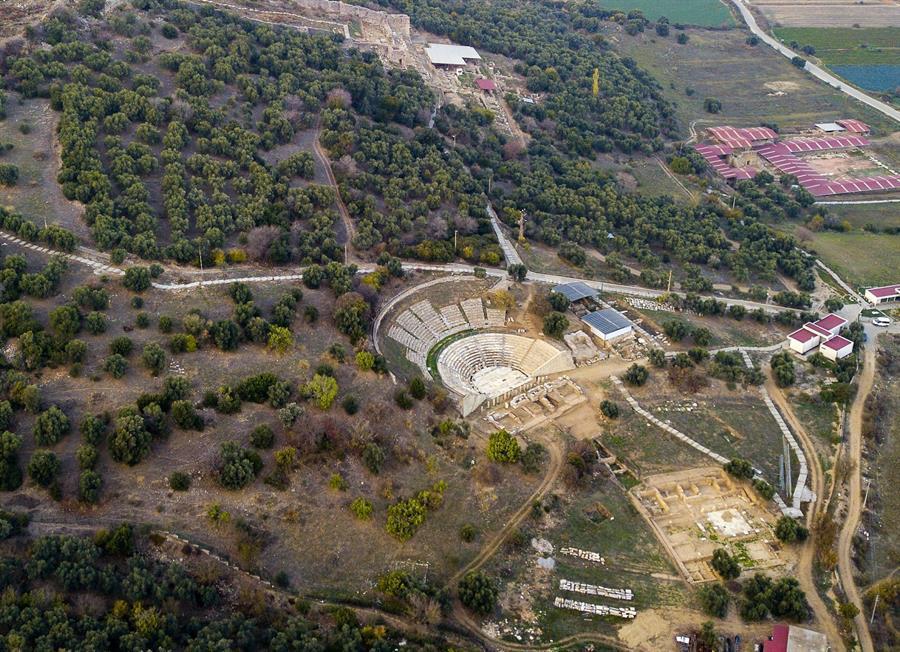
On its 31st year, excavations in the western province of İzmir’s ancient city of Metropolis, supported by the Sabancı Foundation, will continue to illuminate the secrets of history.
This year’s excavations, headed by Manisa Celal Bayar University Archeology Department lecturer Professor Serdar Aybek, will continue to explore public and religious areas such as water structures and churches belonging to the city.
The works in the Metropolis, known as the “City of the Mother Goddess,” aim to uncover two newly discovered cisterns and the water storage complex consisting of four interconnected cisterns.
On a written statement, Sabancı Foundation General Director Nevgül Bilsel Safkan said that they had been supporting the excavations for 18 years, adding, “The magnificent female statue, found in the first days of the excavations, made us very happy for its contributions to archeology and history. We look forward to the discovery of new information about life in the ancient times in Metropolis, the Mother Goddess City, with this year’s excavations.”
The head of the excavations, Aybek said, “We are excited to witness the transformation of a barren hill into an important ancient city and archaeological site in the region over the years, with the works we have carried out in Metropolis since 1990. The realization of this transformation has been possible with the support of institutions and even individuals from all walks of life, especially the institutions of the state.”
The cleaning of the mosaics, which are very well preserved and that spread over large areas in the ancient city, will also continue this year.
The mosaics will be opened to visitors after the cleaning of lime layers formed over time on their surface and revealing the rich color and pattern diversity.
The ancient city of Metropolis, which has been brought to light during excavations carried out since 1990, is located between the Yeniköy and Özbey neighborhoods of the Torbalı district of İzmir.
The history of Metropolis dates back to the first traces of Late Neolithic settlements near the city to the Classical Age, to the Hellenistic Age to the Roman and Byzantine periods, the Principalities and Ottoman history.
Until now, the Hellenistic theater, the Bouleuterion (parliamentary building), the stoa (columned gallery), two bath structures built during the Roman Empire, the bath and palaestra (sports area) complex, the hall with mosaics, the peristyle house, shops, structures and spaces that form the texture of the ancient city such as public toilets and streets have been unearthed in the ancient city.
Also, during the excavations of these places, more than 11,000 historical artifacts including ceramics, coins, glass, architectural pieces, figures, sculptures, bone and ivory artifacts and many metal finds were unearthed.
The artifacts obtained during the excavations are exhibited at the İzmir Archeology Museum, İzmir History and Art and Selçuk Ephesus museums.